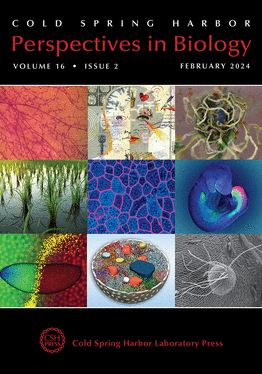结合分子、宏观进化和宏观生态学视角看多样性的产生
IF 6.9
2区 生物学
Q1 CELL BIOLOGY
引用次数: 0
摘要
查尔斯-达尔文(Charles Darwin)提出了一个由可遗传变异的逐渐积累驱动的统一的多样化过程。DNA 数据库的增长和基因组测序的增加,再加上分子系统发育分析的进步,使我们有机会实现达尔文的愿景,将变异的产生与品系的多样化联系起来。分子进化的速度与动物和植物的多样化速度相关,但基因组变化与物种分化之间的关系非常复杂:突变率随生活史和生态位的变化而变化;替代率受突变、选择和种群规模的影响;不同种群获得生殖隔离的速度不同;性状、生态位和分布也会影响多样化速度。突变率与多样化率之间的联系是复杂多变的物种演化过程的一部分,对理解生物多样性的产生具有重要的理论意义,同时也对利用 DNA 理解宏观进化时间尺度上物种演化的动态具有实际影响。本文章由计算机程序翻译,如有差异,请以英文原文为准。
Combining Molecular, Macroevolutionary, and Macroecological Perspectives on the Generation of Diversity
Charles Darwin presented a unified process of diversification driven by the gradual accumulation of heritable variation. The growth in DNA databases and the increase in genomic sequencing, combined with advances in molecular phylogenetic analyses, gives us an opportunity to realize Darwin's vision, connecting the generation of variation to the diversification of lineages. The rate of molecular evolution is correlated with the rate of diversification across animals and plants, but the relationship between genome change and speciation is complex: Mutation rates evolve in response to life history and niche; substitution rates are influenced by mutation, selection, and population size; rates of acquisition of reproductive isolation vary between populations; and traits, niches, and distribution can influence diversification rates. The connection between mutation rate and diversification rate is one part of the complex and varied story of speciation, which has theoretical importance for understanding the generation of biodiversity and also practical impacts on the use of DNA to understand the dynamics of speciation over macroevolutionary timescales.
求助全文
通过发布文献求助,成功后即可免费获取论文全文。
去求助
来源期刊

Cold Spring Harbor perspectives in biology
CELL BIOLOGY-
CiteScore
15.00
自引率
1.40%
发文量
56
审稿时长
3-8 weeks
期刊介绍:
Cold Spring Harbor Perspectives in Biology offers a comprehensive platform in the molecular life sciences, featuring reviews that span molecular, cell, and developmental biology, genetics, neuroscience, immunology, cancer biology, and molecular pathology. This online publication provides in-depth insights into various topics, making it a valuable resource for those engaged in diverse aspects of biological research.
 求助内容:
求助内容: 应助结果提醒方式:
应助结果提醒方式:


